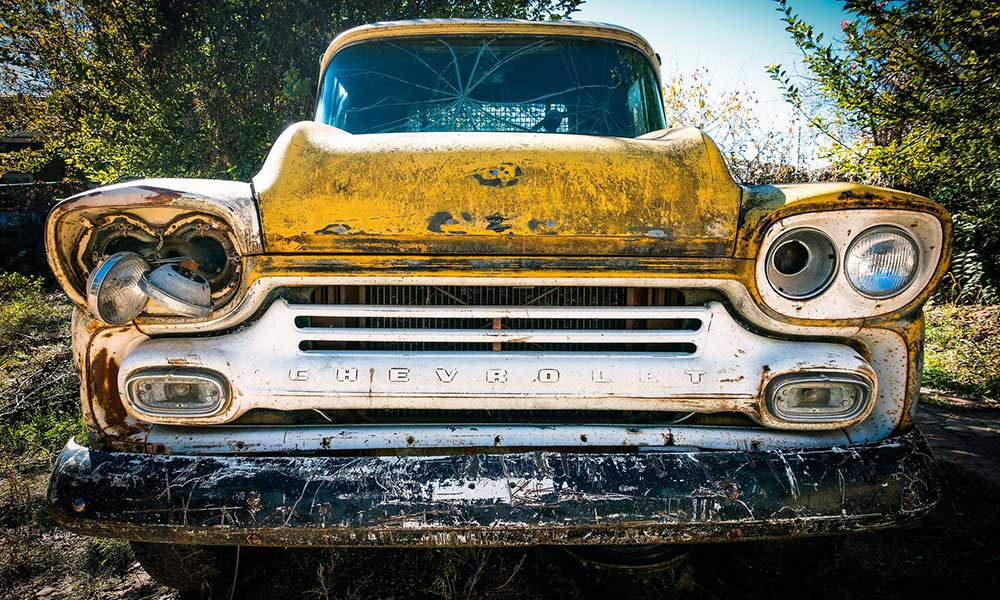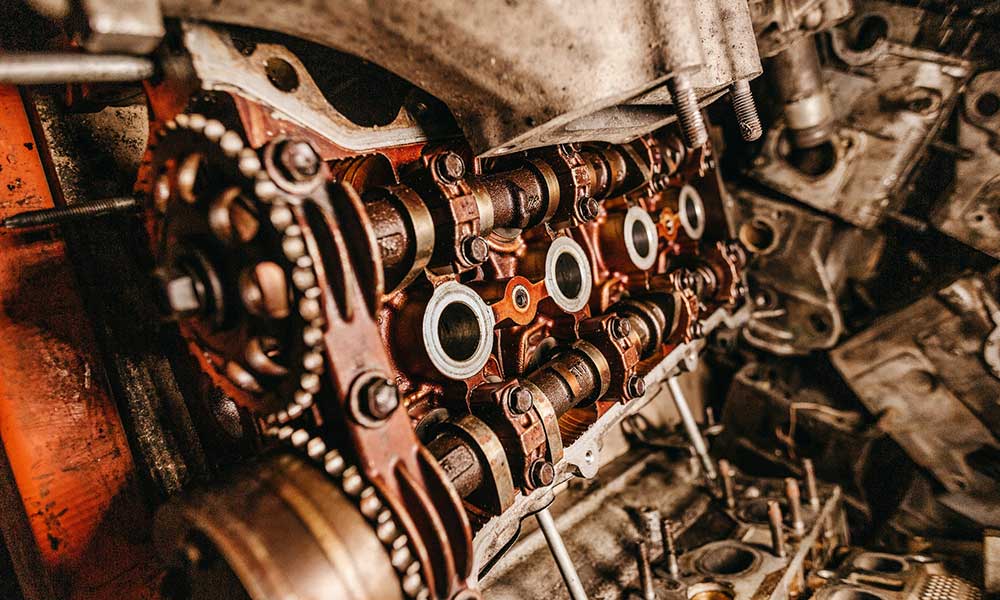The VIN number is a 17-character vehicle curiosity surrounded by car manufacturing mystery. OK, maybe that is a bit much. But largely what a VIN is, how to use it, and where to find it is not commonly understood.
Even the widely exception use of the phrase “VIN Number” is rooted in error. Think about it, every time you say “VIN number” you are saying “vehicle identification number number”. It’s time to de-mystify the VIN number.
What Is a Vin Number?
A VIN, or vehicle identification number, is considered to be an identifying code for the car. It’s considered to be the fingerprint of the vehicle and is a unique serial number or code. No two vehicles have the same VIN number.
The VIN number is used on all vehicles, scooters, motorcycles, mopeds, and towed cars. Each car receives its own VIN number when it’s produced by the manufacturer. The VIN number reveals specific information about the vehicle, like the make, model, engine type, and the year it was built. The National Highway Traffic Safety Administration offers a VIN lookup tool to use to research this information.
Why Is A VIN Number Important?
VIN numbers on cars are important because they reduce the risk of falling for scams when you’re looking to buy a used car and are shopping around. If you obtain the VIN number of a car you’re looking to purchase, it can obtain reliable and accurate information about the vehicle and learn more about the car’s history. This can allow you to get important insight into the car and help you to make an informed decision if you want to purchase it.
The VIN is also useful if you want to sell the car in the future and helps you to establish trust with prospective buyers. The VIN number is important because it will tell you where and when the vehicle was manufactured.
The VIN number is also useful for safety purposes to determine if there’s been any recall on the vehicle in the past. It’s also necessary for looking up warranty claims, registrations, insurance coverage, and thefts.
VINs can also be used to look up the history of the car and can reveal if the car has ever been in an accident, if the car carries a salvaged titled and other critical information.
Where Is the VIN Number On A Car?
The VIN number is 17 digits long and is located on the left side of the dashboard. You can find it on the bottom of the windshield when you’re looking through the glass from the outside of the vehicle. It should be located on the driver’s side in front of the steering wheel.
The number may also be present in a few other places on the car, which includes on the front of the engine block. The digits contain both numbers and capital letters. It can also be found on the car’s registration card.
Every car manufactured since 1981 contains a VIN number that is in a bar code format and is always present on at least one area of the vehicle. Some models may even feature the VIN number on the inside of the door on the driver’s side. The number is present on different types of cars manufactured in the U.S. and in other countries. Each car has its own VIN number.
How Long Is a VIN Number?
The VIN contains 17 digits or characters and is a long code composed of both numbers and capital letters. The first few digits of this string of characters give details about the manufacturer of the vehicle. The digits are not random but reveal important information about the car and are easy to read if you understand what they represent. The following digits offer insight into the make, model, trim level, information about the engine, when it was manufactured, the serial number, and the assembly plant.
Not only is the VIN number easy to find on a few spots on the car, but it’s also present on key documents that are associated with the vehicle. You can find it on the title of the car, as well as the insurance policy. It will also be included in policy reports that are filed.
How to Read a Vin Number?
If you want to decode a VIN number, you’ll need to understand how the different digits are put together. The first three digits are the world manufacturer identifier. The fourth through the eight digits represent the vehicle descriptor section. The ninth character is a check digit. The Vehicle Identifier Section is represented by digits 10 to 17. The car’s plant code is represented by the 11th digit. When you’re looking at digits 12 to 17, this reveals the production number of the car when it was manufactured at the plant.
Letters that are never used in any type of VIN number include I, O, and Q.
What Is a Vin Number Used For?
VIN numbers are useful for discovering any recalls from the manufacturer and learning about the unique features of the car. It can also be used to track warranty claims, insurance coverage, and registrations. You can obtain reliable information about the car, whether you own it or are performing maintenance or repairs on the vehicle.
Is It Safe to Give Out VIN Number?
Many drivers don’t realize that it’s safe to give out a VIN number to ensure other people can verify the history of the car if they’re performing repairs or are looking to purchase it. VIN numbers aren’t sensitive information and are not considered to be personal information that can put your safety at risk. There isn’t much thieves or scammers can do if they obtain a VIN number, which makes it safe to distribute or post online. This is why the VIN number is clearly displayed on the windshield where anyone can see it because it’s not sensitive information that needs to be concealed.
Why Would a Potential Car Buy Buyer Ask For a VIN Number of a Used Car?
If someone is looking to purchase a used vehicle, they’ll likely want to obtain the VIN number because it can verify the information you’ve communicated about the car. The prospective buyer will be able to look into the history of the car and determine if it’s been in any accidents. They can also learn more about where and when the car was manufactured to avoid buying a car that is the incorrect year. The buyer will also be capable of looking into any recalls or warranties that are still in effect.
What Is a VIN Lookup?
A VIN lookup, sometimes call a vehicle history report, is available through the National Highway Traffic Safety Administration to provide anyone with pertinent information about a specific make and model. The VIN lookup is available online on the organization’s website and is free to use. Additional websites online also offer the same type of feature to accommodate drivers. It should not cost anything to use. The National Insurance Crime Bureau also offers a VIN lookup tool on their website at no cost.
VIN Number Examples
Below is a sample list of VIN numbers by: VIN Year, Make and Models of the car
JH4KA8160PC000949, 1993, Acura, Legend
1G8AN15F07Z174255, 2007, Saturn, Ion
1G8DC18D0CF150367, 1982, Chevrolet, Blazer
JH4KA4560KC018749, 1989, Acura, Legend
SAJWA1C78D8V38055, 2013, Jaguar, XJ
WBABH8320TEY10200, 1996, BMW, 3 Series
WBAEF8328WEK90772, 1998, BMW, 8 series
WBSBF9123RJC35698, 1994, BMW, M3
2HGES257X5H500205, 2005, Honda, Civic
1HGEM21812L600524, 2002, Honda, Civic
5FNRC18924B090895, 2004, Honda, Odyssey
1HGES16595L023163, 2005, Honda, Civic
5TBRT38103S349134, 2003, Toyota, Tundra
5TFBW5F16EX06D630, 2014, Toyota, Tundra
JF1ZNAA14D1723474, 2013, Toyota, FR S
JT2AE09V3S0080829, 1995, Toyota, Corolla
JT2AC51L1V0199450, 1997, Toyota, Tercel
5TFUU4EN4EX24B578, 2014, Toyota, Tacoma
4T3GF19CXYU302399, 2000, Toyota, Sienna
2T1BR32E56C640079, 2006, Toyota, Corolla
4T1BE32K034174847, 2003, Toyota, Camry
1N6AD0FV1CC442376, 2012, Nissan, Frontier
3N1CB51S14L464382, 2004, Nissan, Sentra
5N1ED28Y83C648264, 2003, Nissan, Xterra
5N1AT2MM0EC780216, 2014, Nissan, Rogue









